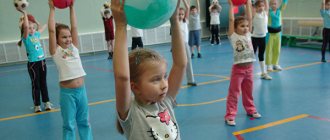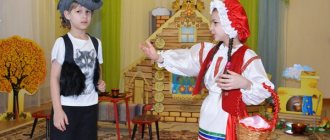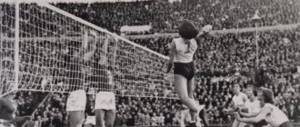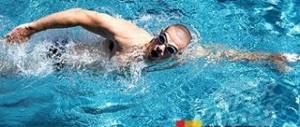Joint games for parents and children bring invaluable benefits in the formation of children's character and in the development of the psyche. Games allow parents to pass on their life experience to their children, teach them to be independent, not to be afraid to make important decisions, to bear responsibility for them and to correctly evaluate the actions of others. In addition, spending time together improves the relationship between parents and children.
It is very important for adults to organize the game correctly and to interest children in it as much as possible. To do this, it’s good to immediately take the role of an ordinary participant and, remembering your childhood, completely immerse yourself in the game. A child, noticing such sincere parental interest, will certainly be carried away by the process.
Games for children should primarily be aimed at developing:
- memory;
- attentiveness and speed of reaction;
- communication skills;
- physical endurance and agility.
Educational games
The most common and simple educational games for children are the following:
- "Cold - hot." The child selects an object or favorite toy, hands it to an adult, closes his eyes or turns away (the main thing is not to peek). An adult hides an object in the room. Then the child gradually approaches certain objects in the room in search of a hidden toy. At this time, the adult gives him hints: “cold”, “warmer” or “hot”. If the child moves in the wrong direction, the prompt “cold” sounds. If the search direction is correct, then, respectively, “warm”, “warmer” and “hot”.
- "What's missing?" In this game, an adult places various objects on the table in front of the child: pencils, pens, counting sticks, small toys, and so on. Then he asks the child to close his eyes, while he himself removes something from the table. When the child opens his eyes, the adult asks him to name the missing object. This game can be slightly transformed and place unambiguous but multi-colored objects (for example, pencils) on the table, and also ask the child to determine what color the pencil has disappeared.
- "Male and female names." According to the rules of the game, an adult and a child must take turns quickly calling out male and female names. However, no name should be repeated.
- "Tasty - tasteless." It is advisable that there be several children's participants in this fun game. You will also need a medium-sized ball. The adult takes turns throwing the ball to the children, while naming something edible or inedible. If something edible is heard, the child must catch the ball, and if it is inedible, push it away from him.
- “Draw it the same way.” An adult draws several simple geometric shapes (triangle, square, circle, rectangle) on a piece of paper, shows it to the child for 1 minute, then removes the piece of paper and asks the child to draw on a blank piece of paper what he just saw, and in the same sequence.
Sports and entertainment games for children and their parents, consultation on physical education on the topic
Sports and entertainment games
for children and their parents
(Consultation for educators and parents)
“To make a child smart and sensible, make him strong and healthy: let him work, act, run, scream, let him be in constant motion.” Jean-Jacques Rousseau
A healthy child does not need to be forced to do physical education - he himself needs movement and willingly performs more and more new tasks. If the child has no desire to study, the reasons for such a negative attitude towards classes should be analyzed and more favorable conditions should be created in the future. Although, to be honest, in my practice I don’t remember such cases, with the exception of moments when the child was unwell. I never force children to perform this or that movement; I don’t turn my classes into a boring pastime. After all, preschoolers do not yet feel the need to study in the literal sense of the word. In this regard, I structure classes in such a way as to gradually involve children in all new games and fun, systematically repeating them so that the kids reinforce the movements they have learned. Demonstrating their skills in front of their peers also helps to awaken interest in classes. Thus, I gradually develop in the children confidence in their abilities and the desire to “go” further, mastering new, more complex movements and games. I believe that physical education is the most effective school for teaching movement. The complexity of the load, the unity of health-improving, educational and educational tasks, characteristic of physical education classes, receive a qualitatively new meaning in the light of modern requirements of developmental education. Children need to be actively involved in a healthy lifestyle, taught to consciously manipulate movements - modify, invent, choose the most appropriate method of action, convey an emotional state in movement, enter an imaginary situation. In a word, in teaching movements, I highlight a specific focus: to teach children not to imitate, but to create. The main thing in this direction is to actively support in children the desire for creativity, both when performing individual motor tasks at the first stage of training, and in targeted physical education classes. In fact, jumping, for example, one by one over a “stream” laid out on the floor, first bending your knees and trying not to step on the line, is quite boring and not understandable to every child, and therefore an unproductive activity. I do it differently. I lay out many “streams”: wide and narrow, short and longer, and I also say that they flow in different directions. Children jump over which one they want, changing places, because everyone wants to try to jump over both. In such a situation, I give children the opportunity to choose, and this is the very beginning of their creative, not yet conscious searches. This approach supports interest in the learning process and the desire to repeat the movement many times. My task at this stage is to observe and individually correct movements. I make sure to make the actions of some guys who are not very confident in themselves the subject of general attention. This helps them believe in their strengths and capabilities. For example: “Look how great Denis is, he chose the widest stream, see how much he swung his arms to jump further!” I consider attention to technique at the initial stage of training not so important. The main thing is to create in children a desire to act. Let me give you another example. The traditional technique is that everyone should go one after another to visit the Bunny along one bridge. This is inconvenient: a queue forms, children have to wait, and class density decreases. A difficult test for kids, I must tell you. Therefore, there should be several different bridges: a board lying on the floor; raised bars; pieces of plywood in the form of rectangles, circles, squares. And it is not at all necessary to lay it all out in a row; the equipment should be located around the perimeter of the hall. A child who is inclined to imitate will want to walk across all the bridges. In the future, I invite the children to walk along the bridges as the “owner of the house” does. If we go to visit the Cockerel, raise our knees high, go to the bear cub on all fours, and go to the mouse on our toes. There are many variations, you just need to use your imagination. Often children themselves offer interesting options. In this case, the problem of motor activity is simply and naturally solved - the children move all at the same time, at a rhythm and pace convenient for each. And what is especially pleasing is that they perform all actions with great pleasure, without coercion. Anyone who engages in physical education with young children knows that it is quite difficult to teach them formations and formations. A creative approach again helps me cope with this task. I will share my experience on how to get children to form a column through play tasks with dolls. The dolls sit in houses - flat hoops, lying in a row (according to the number of children). I suggest children teach their dolls to do physical exercise.
- stand next to the doll, whoever wants to take a walk with your doll...
- take the doll to your house, now take a walk yourself... Then I invite the children to do exercises with the dolls. Then, throughout the entire lesson, the guys work with the dolls: they roll a ball for it, dance around it, dance with the dolls. Opportunities for the development of motor initiative and the manifestation of creativity increase many times over in older preschool age. At each physical education lesson there is a place for creative tasks, for self-expression of each child, for showing initiative, invention, and improvisation. As children get older, their general and motor experience increases. This gives me greater freedom of pedagogical communication and allows me to encourage children to take proactive actions already at the level of forming a game plan. At this stage, children like to experiment with movements and modify them depending on the situation. For example, I give the following tasks: imagine that you are walking on hot sand barefoot, show how you can walk so that the sand does not burn your feet too much;
- think and build high and low bridges with your body; - you are graceful cats lapping milk from a bowl; - look around and choose objects from which you can build a tunnel, through which we will crawl on all fours. Of course, I use the means of artistic expression - appropriate intonation of voice, facial expressions, gestures. The most important thing is that I must be sure that my way of presenting a motor task will cause an adequate reaction in the children. For example, children of primary and secondary preschool age perfectly perceive exercises in a plot form. And older kids already understand the semantic side of the movement; they are more independent and proactive. I always welcome and encourage a child’s ability to independently find an original way to solve a given motor task. Thus, the basis of children's improvisational reactions is a developed imagination. Its development is determined by the purposeful formation of motor experience, the core of which is the possibility of choice. Next, I want to demonstrate the creative possibilities of different types of physical education activities. I don’t necessarily start my classes with the usual formations and rearrangements. Instead, I use games with building elements. For example, such as: “Find yourself a mate”, “Wattle fence”, “Whose link will be built faster”, “Behind the highest or lowest” and others. Children really like game tasks like “Build it the way you want”: while moving in all directions, I call the child, who gives the appropriate signal, building the children at will anywhere in the gym. Of course, music helps you feel the rhythm and change the way you move. Children like the change of musical accompaniment; they sensitively feel the character of the music. During general developmental exercises, I often resort to this technique: I just name a familiar exercise, giving the children the opportunity to remember. The kids also like it when I invite them to come up with exercises themselves (however, I tell them which part of the body they should be for). Sometimes children surprise and even amaze me with their creativity and resourcefulness. I really like the spontaneity and sincerity with which they engage in the task-game. But in order for older children to successfully cope with such tasks, already in younger groups, I suggest doing the last repetition independently while doing the exercises, while highlighting and praising those children who do it better. I try not to ignore anyone. By the way, I would like to note: if the children are supposed to come up with exercises, then it is more advisable to use a scattered formation - this way they can see each other better. Basic movements: jumping, throwing, climbing, balance exercises - the core of any typical physical education class. They need to be mastered not only through direct teaching (using demonstration and explanation), but also through game tasks. I interest children in intriguing tasks, entertainment, and the opportunity to manipulate objects and equipment in different ways. Let me give examples of some tasks:
- who will throw the bag back over his head; - who will stand on one leg after spinning with his eyes closed; - hit the rolling hoop with the ball;
- get to the stairs in any possible way, but not by walking or jumping; - choose any item that can be thrown into the basket, but do it in a safe way, and so on.
Immediately after the lesson, we sum up the results with the children. We find out how else it was possible to complete the tasks in other ways. In the next lesson we will try new methods. Of course, I guide the children in the right direction. Outdoor games are the most popular among children, the most sought-after form of physical activity and an immense scope for all sorts of imaginations. Play, especially active play, is a joy for children. I find it boring to just announce the name of the game at the end of class. I try to make the beginning of the game exciting, exciting fun thoughts. — for kids I suggest finding a previously hidden mask-hat and when the children find, for example, a cat’s hat, they name possible games with this character and we choose a game;
— I tell a short poem about a kid who got lost. The guys find the toy, and the kid catches up with them;
— I suggest that older children try to change the rules of a familiar game, complicate it, introduce new characters;
- I ask what games the weather outside the window suggests, I suggest that boys and girls consult separately, and then play in turns; - I remind you that you need to improve long jumps and the children themselves name games where this movement is used.
Thus, in the game, children, imperceptibly, without coercion, learn to walk correctly, run fast, jump high and far, climb deftly, and throw accurately. They improve not only in motor development, but also in the ability to behave in a team. Teaching movements in all types of activities should be fun. I try to make the very statement of the problem at the beginning of the lesson a kind of invitation to children to think and contribute. Therefore, I designate the activity thematically so that the children prepare emotionally. Sometimes I remind you in advance of the content of the work, which will serve as the basis for a plot lesson, and then together with the children we prepare masks for the characters in advance and arrange the attributes. Together with the children, at one time I invented and improved the following outdoor games: “Snake”, “Fly, pigeons”, “Into your garden”, “Islands of salvation”, “Caterpillar”. I successfully use these and other games invented with the guys.
The developmental potential of physical exercise and outdoor games is enormous. In the arsenal of tools that shape personality, they are the most favorable basis for children’s ingenuity and the most accessible form of co-creation between a child and an adult.
Application. Development of original games.
Game “Snake”: the teacher takes at one end a long strong rope (3-4 meters), preferably twisted from multi-colored flagella. This will be a poisonous snake. Making wave-like movements and quickly moving around the site, it imitates a snake wriggling and crawling away. The children catch up with her, trying to step on the “snake’s tail.” The game stops when all the children step on the rope. (To avoid collisions, no more than 5-7 children can take part in the game at the same time). If children play barefoot, then along with such physical qualities as balance and speed, this game also helps prevent flat feet. Game “Fly, Pigeons”: paper “pigeons” are great for practicing forward and upward throws. Children themselves make two “pigeons” for themselves and compete, throwing them at a distance with their right and left hands. You can complicate the game by setting the condition that the “pigeon” must fly over a tight rope or reach a certain goal. Game “Islands of Salvation”: small rugs are laid out on the floor according to the number of players - these are islands in the ocean. While the music is playing, children imitate swimming and move between the islands. On the signal: “Shark!” trying to take a place on the island. Gradually, there are fewer and fewer islands, but there are no eliminated players, since the children help each other to keep several people on one island. In the end there is only one island left. Anyone who even steps on the edge of the island with even one foot will be saved. Friends help you stand. Thus, the game develops mutual assistance and the ability to sympathize. Game “Into your own garden”: two players participate. They are located on opposite sides of the court behind the line facing each other. Between them, at the same distance, gymnastic sticks lie parallel, 5-6 pieces on each player’s side. One stick, the eleventh, is in the middle; it should be different in color from the rest. After the signal, players move one stick beyond their line. The one who gets the middle stick becomes the winner.
Communication games
Communication games help a team of children and adults make friends faster, find a common language, and learn to understand each other perfectly. Among these games, the most useful are:
- "Let's get acquainted!". Children and adults sit in a circle mixed together. The very first participant says his name. Then the second participant also says his name, but also adds his age. The third one follows the same pattern, but adds the place of his residence or study to the story about himself. And the very last participant, closing the circle, should already have a whole coherent story about himself.
- "Smart little engine." Participants in the game need to organize a kind of line, standing one after another and placing their hands on the shoulders of the person in front. The adult usually stands up first. Then the guide begins to show some movement. The line standing behind him should exactly repeat them.
- "Fun Geography" Children and adults sit in a circle. Then everyone takes turns saying their name, country or city starting with the same letter as their name.
Outdoor games for children 3-4 years old at home with parents
BeastCharging
Transformations into different animals are suitable for younger children. See examples of animal charging movements in this video: any animal that comes to mind is suitable - everyone has something to stretch. A giraffe stretches its neck, an ostrich stretches its legs, a monkey stretches its arms, a cat stretches its tail, a bunny stretches its ears, etc.
Blanket racing
Clear the floor as much as possible and move furniture away. Ride the children on a blanket or blanket, the older ones can give the younger ones a ride, just don’t make sharp turns, otherwise... (see carousel)!
Parcel
We prop up the baby with pillows. Let's tell dad (grandmother, brother or sister) - there's a package for you! Dad comes, and then “Puff!” The actual “parcel” suddenly emerges from the pile of pillows! Who is immensely happy about her surprise appearance. Try it!
Sport games
Sports games with parents, which develop physical endurance, dexterity and coordination of movements, are also very important. Moderate physical activity is very beneficial for a growing body. Sports games contribute to the development of correct posture, develop all muscle groups, and strengthen the child’s health. The advantage of such games is that they do not require special equipment, so you can play them at home:
- "The fastest". Usually two players play, an adult and a child. They take two chairs, to the backs of which they tie a wide ribbon. Then, on command, everyone begins to twist their own ribbon. The one who does it faster and sits on the chair first will win.
- For coordination of movements. Usually two people participate. Both simultaneously grab the right ear with their right hand and the nose with their left hand. Then you need to clap your hands and change hands, i.e., take your left ear with your left hand, and your nose with your right hand. The winner is the one who has not violated the rules of the game even once and has not gotten confused.
- "The Blind Artist" Several children and several adults participate. First, children draw each adult with their eyes closed. Then adults draw children with their eyes closed. At the end, everyone opens their eyes and looks at what they did.
Sports holidays
We need to talk separately about sports events for children. This is a good way to attract a child to a healthy lifestyle and motivate him to improve his physical skills. You can attend city, school or kindergarten sporting events with the whole family or agree with other parents and spend the holiday on your own.
To organize your own holiday you will need:
- Think over the course of the event. Come up with competitions and gifts;
- Find a suitable venue. For small celebrations, a yard, a football field, or a gym may be suitable;
- Find and prepare inventory.
The purpose of the sports festival is to encourage children to play sports in a fun, informal atmosphere. It’s good if during the event you find time to introduce children to unknown sports and show them exercises and games that are new to them. The brighter and more eventful the holiday program is, the more benefits each participant will receive for physical development and emotions.
Most often, relay races and team games are used for sports events. Competitions between families are popular, when not only children, but also their parents take part.
To prepare a scenario for such a holiday, you need to take into account the age of the participants, their physical capabilities, and the size of the site. It’s good if the chosen competitions are fun and funny: running in fins, carrying balls on a slotted spoon, jumping in bags or wearing funny clothes.
Separately, you need to think about rewards. It is recommended to recognize all participants with a certificate and gifts so that each participating child feels like a winner.
When organizing a sporting event, you always need to think through safety measures, take care of food, water, and medicine.
If you are holding an event far from home, then you need to warn participants about the required uniform and special items.
Sports games in a child’s life are a great way to instill in him a love for a healthy lifestyle, develop physical qualities, teach him to overcome himself, and work in a team. The methods of conducting sports games and events proposed in the article make it possible to raise a healthy, strong, self-confident person.
If you liked the article, please share a link to it
Team games
Team games perfectly teach you to feel the team and contribute to its cohesion. To do this, it is advisable to learn how to play games such as:
- "Volleyball in the New Year." Since the game requires a lot of space and you won’t be able to play it quietly, it’s better to do it outside the home. The hall needs to be decorated with New Year's decorations, and in the middle, instead of a net, there should be some kind of New Year's banner with congratulations or a long garland. You will also need a large number of multi-colored balloons. On one side of the “grid” there is a team of adults, and on the other - children. The essence of the game is for each team to try to push all the balls from their side to the opponent’s side, without allowing the balls to fall. The winning team is the one with the fewest balls left on its side.
- “Step on the ball.” Several children and several adults participate. An inflated balloon is tied to each participant's foot at ankle level. During the game, you need to try to step on your opponent’s ball so that it bursts. In this case, you must ensure that your own ball remains safe.
- "Shot putter". To do this, a team of adults and children will need one inflatable ball. The winner will be the one who pushed the ball as far as possible from the line drawn on the floor. The place where the ball falls for each player should be marked on the floor with colored chalk.
- "Cook". A team of adults and a team of children participate, each of which has its own tray. On the tray there is a list of products from which one dish needs to be prepared, and on separate tables there are the products necessary for this. The winner is the team that quickly collects all the ingredients needed for this treat on a tray.
All games where children and parents play as equals are not only a fun way to spend time together, but a way to increase children's self-esteem. Thanks to such games, children feel their importance and equality with adults, which allows them to fully develop spiritually and physically. A harmoniously developed child, who will eventually turn into a self-sufficient adult, confidently and firmly walking through life, is the dream of every parent!
Tags:Parents
We also recommend reading on this topic:
- What should physical education be like for school-age children?
- Main types of children's fears
- Advice for parents: how to calm a child during a tantrum?
- What to do if a child manipulates his parents
One answer
- Denis Thanks for the article. Also, one of the possible options for playing with children is board games. My wife and I developed our own version - the board game Yes Theme!!! Very simple tasks help parents and children communicate, formulate questions and thoughts, reflect on themselves, and even have fun. Website vseigra.ru
Answer
Family outdoor games
Pillow or "sausage" fight
Light pillows, such as sofa pillows, are suitable for it (this is how our Ikea shark almost lost its tail). The rules are not to hit him on the head or between the legs. You can replace the pillows with inflatable batons, soft blankets rolled into a tube, aquanoodles (swimming sticks), and we had soft tubular insulation for pipes (bought at a hardware store for 14 rubles per stick). Dad most often capitulates after 10 minutes of fierce fighting! Laughter is up to the ceiling!
Pillow (or toy) fireworks
Let the children put different pillows or soft toys into the blanket and count “three!” They sharply lift it up by the corners, it turns out to be a cool fireworks display!
Giant Scythe
We fold the laid out sheets into three long “sausages” and tie them to any belt or scarf. Weaving requires 2-4 people. One holds the base of the braid, the rest weave.
It's so funny and noisy! Weave it - tie the end with a rope. Now we tie a scarf around the waist and the braid turns... the braid turns into...
dragon tail
The “dragon” runs, and everyone first catches its tail, and then clings to it and runs. The “head” can catch its living “tail”. Then the tail turns, the tail turns into...
Fire trap!
The “Dragon” stands in the center, the children (or one child) are on the circumference. The dragon sweeps its fiery tail across the floor, trying to catch the kids.








